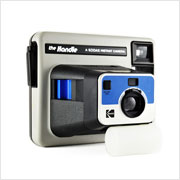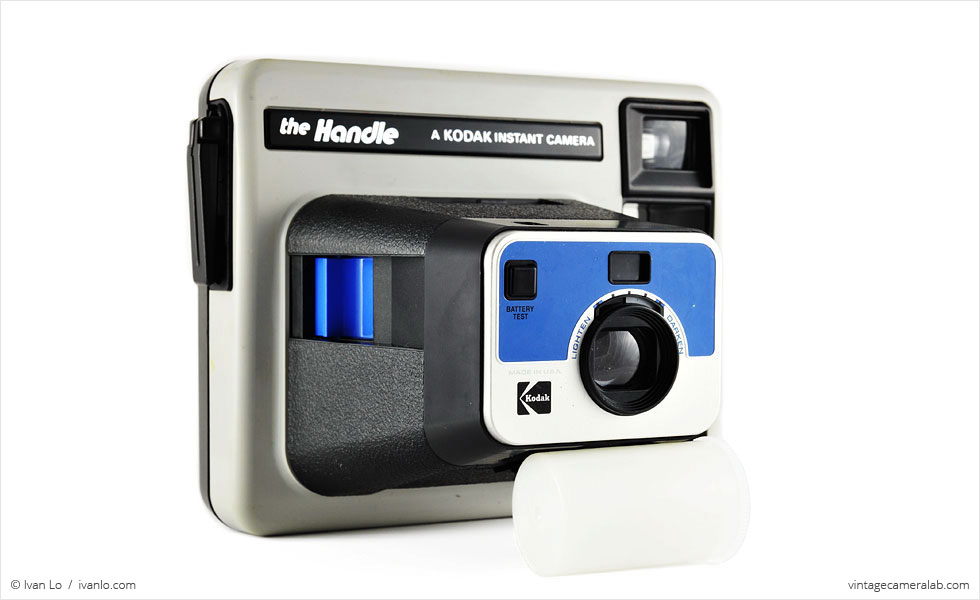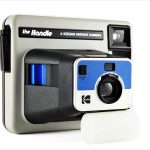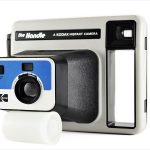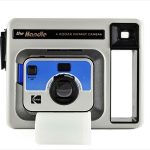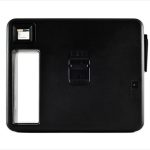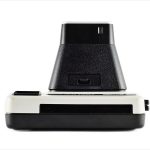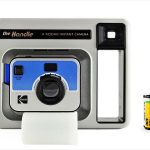Kodak Handle Specifications
| Manufacturer: | Eastman Kodak Company |
| Origin: | USA |
| Made in: | Rochester, NY, USA |
| Introduced: | 1977 |
| Type: | Viewfinder |
| Format: | Instant Film (Kodak PR-10) |
| Dimensions: | 17.2 x 14.5 x 14.2 cm |
Kodak Handle Overview
The Kodak Handle was produced during Kodak’s brief and ultimately doomed attempt at instant film. Polaroid took Kodak to court for patent infringement in 1981 in spite of some crucial differences in Kodak’s approach to instant film and instant cameras and eventually won. Defeated, Kodak was ordered to cease production of all instant film and related products (including the Handle) as well as pay Polaroid $925 million (around $1.5 billion in today’s money).
Like the majority of instant cameras, the Handle relies on a simple viewfinder located above the grip for composition. Although exposure is automatically controlled via an electric eye located above the lens, there’s still a rudimentary exposure compensation dial on the front barrel. Also on the front of the barrel is a battery test button located in the corner which activates a red light on the top of the nose. Just behind the battery test light is a socket for flash bulbs and on the side of the barrel is the blue shutter button. After making an exposure, a black winder that folds out of the side is used to advance to the next frame, a pleasantly mechanical feature to an otherwise electronic camera.
Curiously, the Handle is very different from its slimmer sister the Colorburst but has proportions similar to that of Polaroid’s Colorpack series which is why I had to use a plastic film canister to prop up its nose for these photos. Also unlike the Colorburst 100, the Handle looks and feels very much like a cheap, plastic consumer camera. Despite this, consumers still dished out $40 (about $150 today) for one in the late ’70s. Lucky for me, I only paid 99 cents at the thrift store for the Handle along with an unopened pack of Kodak instant film and the original user’s manual complete with cheesy photos.
Find your very own Kodak Handle on eBay.
McKeown, James M. and Joan C. McKeown’s Price Guide to Antique and Classic Cameras, 2001-2002. (Grantsburg, WI, USA: Centennial Photo Service, 2001), p 343.
